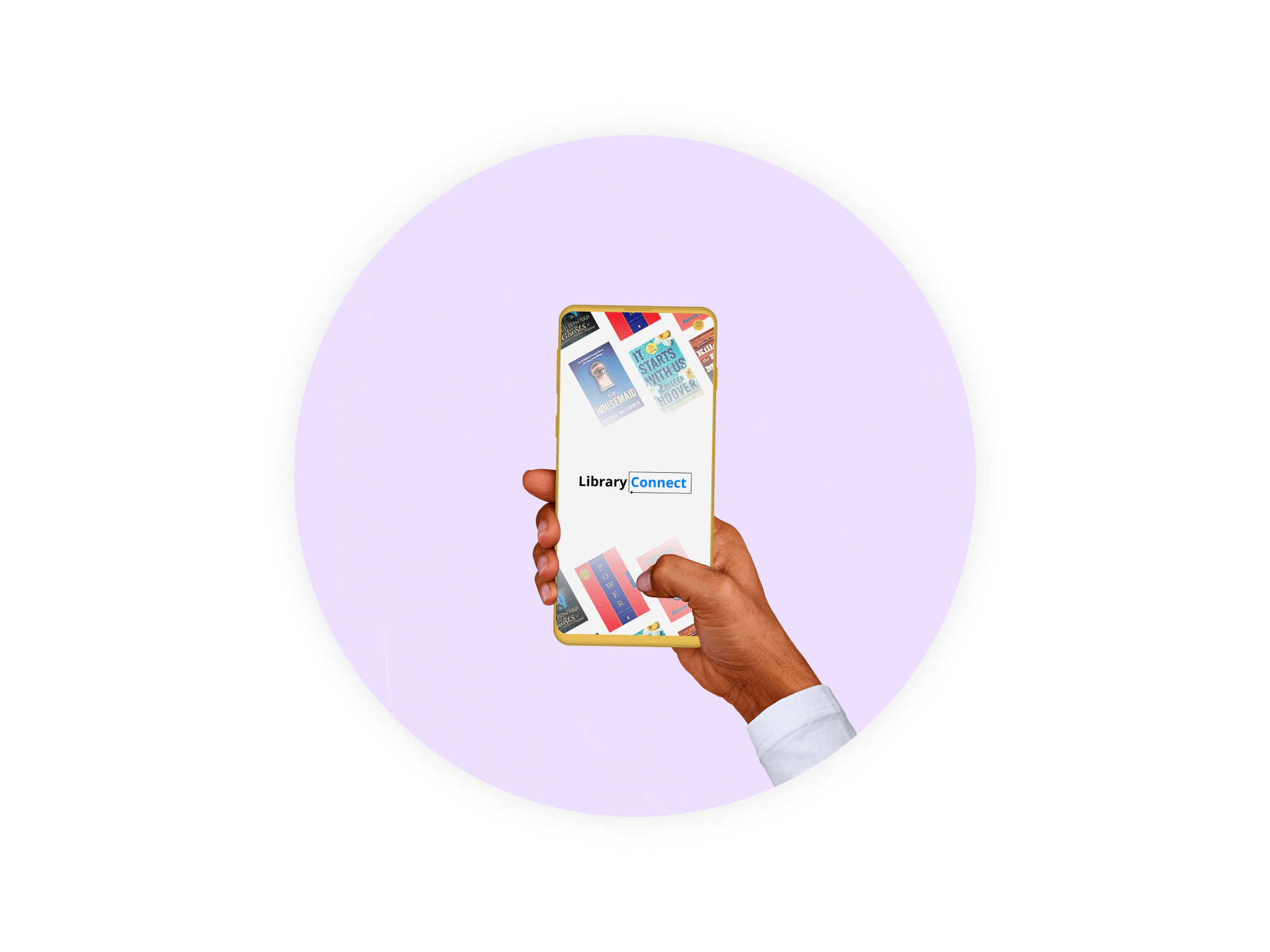
The LibraryConnect mobile app revolutionizes the library experience by providing a user-friendly platform for book lovers. With intuitive features, users can effortlessly search for books, reserve them, receive pickup notifications, rate and review books, and stay updated on library events.
It offers a seamless way to access and engage with library resources, fostering a vibrant community of readers.
LibraryConnect is designed with a clean and intuitive interface, making it accessible to users of all backgrounds. Enhance your reading journey with LibraryConnect, connecting you to a world of books and literary experiences

Users of the LibraryConnect app often face challenges that hinder their library experience. These include limited book availability, technical glitches, lack of user-generated content, overwhelming notifications, and varying levels of integration with local libraries. These issues can lead to frustration, inconvenience, and a less engaging user experience. Recognizing these challenges is crucial for developers to focus on improving book availability, resolving technical issues, encouraging user participation, refining notification management, and strengthening integration with local libraries.
The goal of LibraryConnect is to enhance the library experience for users by providing a seamless and efficient way to access and engage with library resources. By streamlining the book search and reservation process, the app saves users time and effort. It ensures that users can reserve their desired books, receive timely notifications for pickup, and stay connected with the library community. The app’s features, including book rating and reviews, as well as event updates, contribute to a vibrant and engaging reading ecosystem, fostering a sense of community among book enthusiasts.
Hearing directly from stakeholders and documenting the crued problem for understanding the problem at hand.
Learning more about the problem by hearing from the users facing the problem or secondary data.
Creating Problem statement stating the problem from the perspective of the users facing the problem
Brainstorming to come up with ideas that can serve as solutions to the problems in the problem statement
Prototyping Fidelity designs help designers gather feedback, iterate on concepts, and refine their solutions.
By testing, designers can identify potential issues, validate assumptions, and make informed design decisions.

Adam is a tech-savvy individual who has a deep passion for reading, particularly in the science fiction and fantasy genres. He values the convenience and efficiency of digital solutions and is always on the lookout for innovative ways to enhance his reading experience.
Literature Review: We conducted an extensive review of existing research papers, articles, and case studies related to library apps and user experiences. This secondary research helped us identify common themes, challenges, and best practices to inform our app design.
Competitor Analysis: We thoroughly analyzed similar library apps available in the market to assess their strengths, weaknesses, and areas for improvement. By studying user reviews and ratings, we gained insights into user expectations and identified areas that needed special attention in the design of LibraryConnect.
Persona Development: Based on the gathered data, we created a set of fictional user personas representing different user segments. These personas were developed with detailed characteristics, goals, behaviors, and pain points to guide our app’s design decisions and feature prioritization.
Through this user research process, we uncovered key findings:
While our research did not involve direct interactions, the insights gathered from online surveys, forums, literature review, and competitor analysis shaped our app’s design and development. Our user-centric approach aimed to ensure that LibraryConnect meets the diverse needs and preferences of potential users, creating an engaging and seamless reading experience
While analyzing and researching we were able to find some Fintech related solution to check their strengths, weaknesses, benefits and opportunities that could be implemented in our solution.
Pain points from various users from different background was identified and documented through open end interviews and also reference to our user personas, and real life issues while desiging the solution.
In order to understand out users better, and how they might interact with our solution, with these we got insight as to how the users utilizes the solution and how the solution would solve the users problem.
We were able to point out model methods for the solution being designed( Fintech product). Identified task was then presented with a flow to understand how the user will interact with the product in general.
We followed a lean UX design thinking process to ensure that the decisions were supported through user research and feedback.
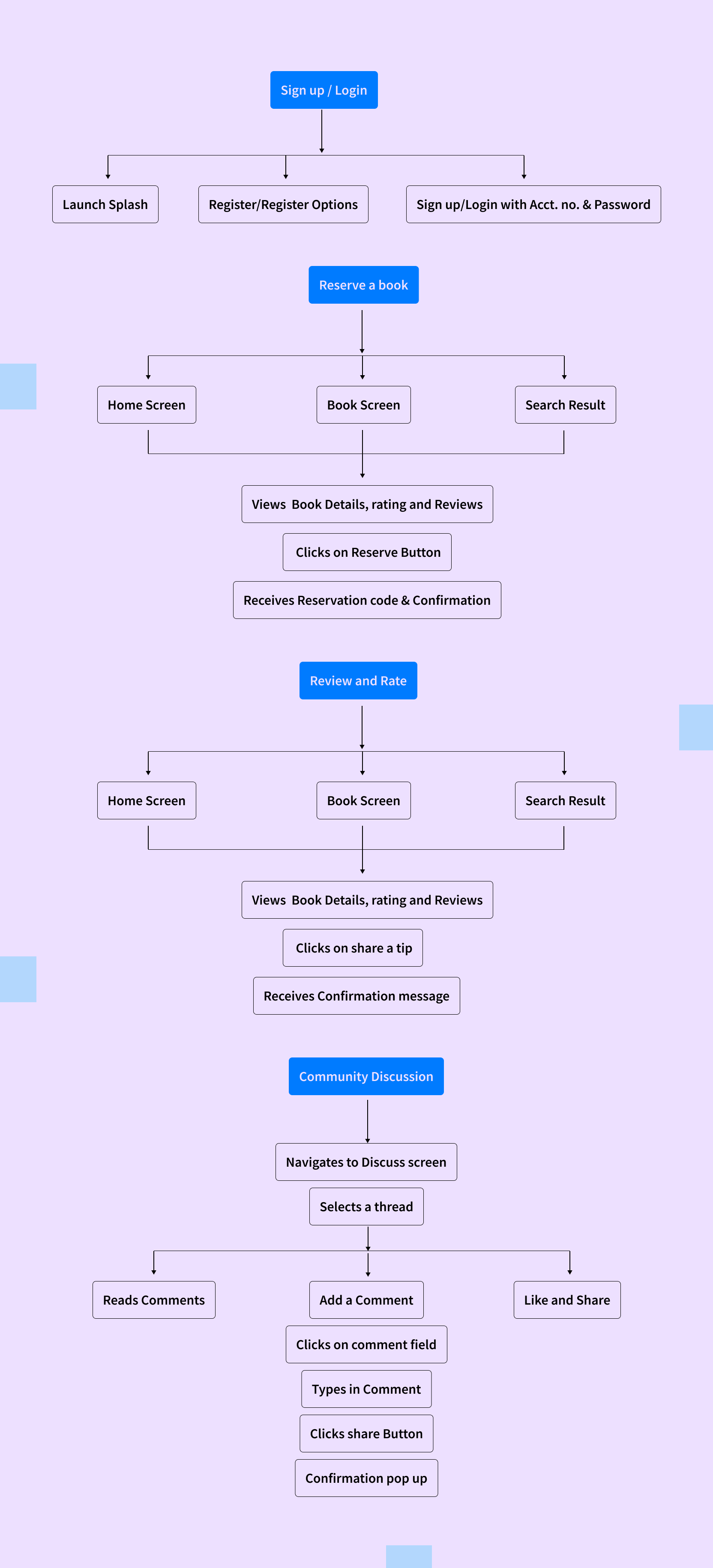
Low-fidelity wireframes are simplified and rough representations of a digital interface or design concept. They are typically created during the early stages of the design process to quickly explore ideas and concepts without getting into detailed visual design or interaction specifics.
High-fidelity mockups refer to highly detailed and visually polished representations of a user interface or design concepts. They are created using design software or tools that allow for precise control over visual elements, typography, colors, and interactive components.
This introduces first time users to LibraryConnect and tells about the amazing features it’s got to offer. This stage should be promissing and eye catching.
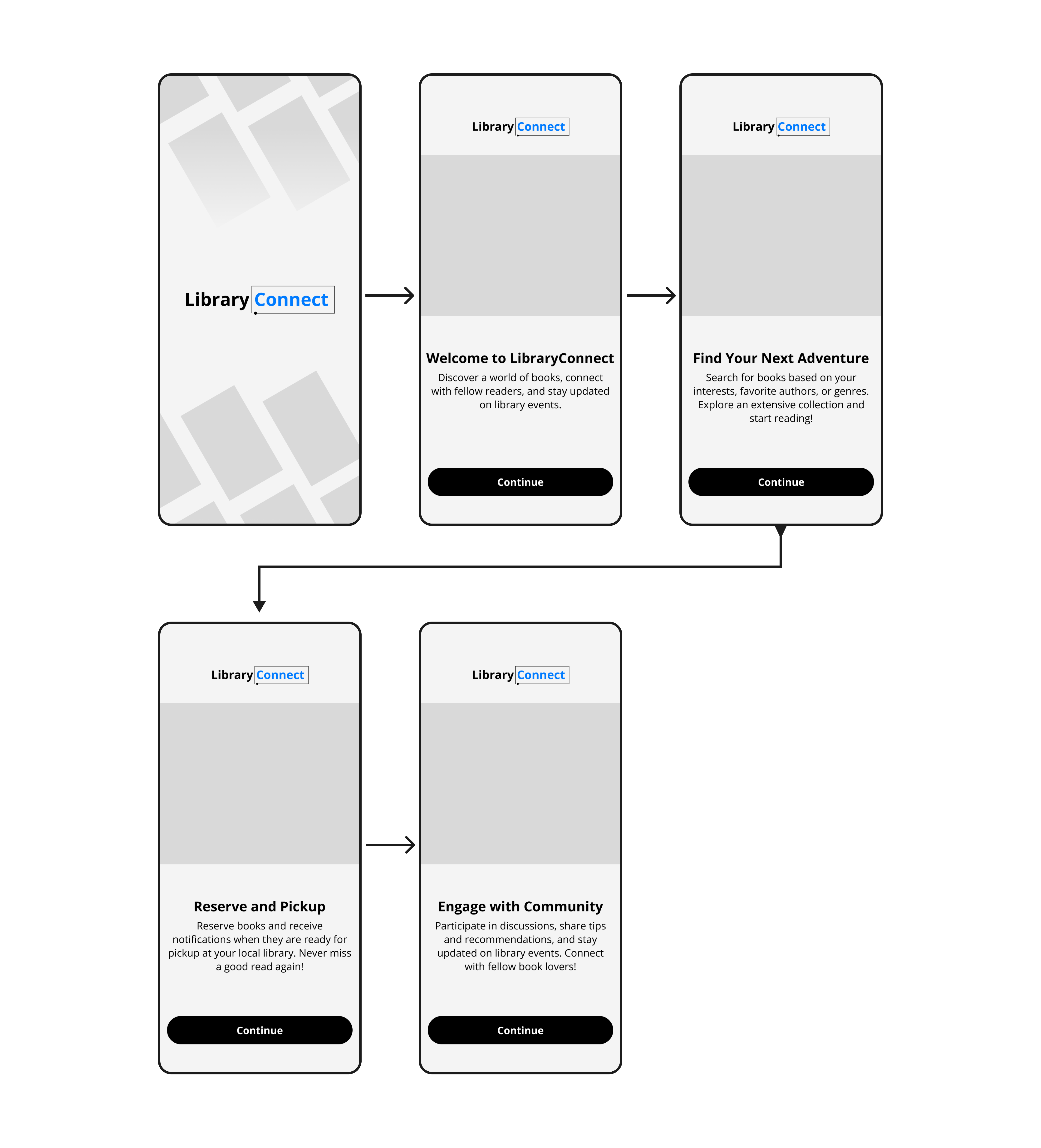
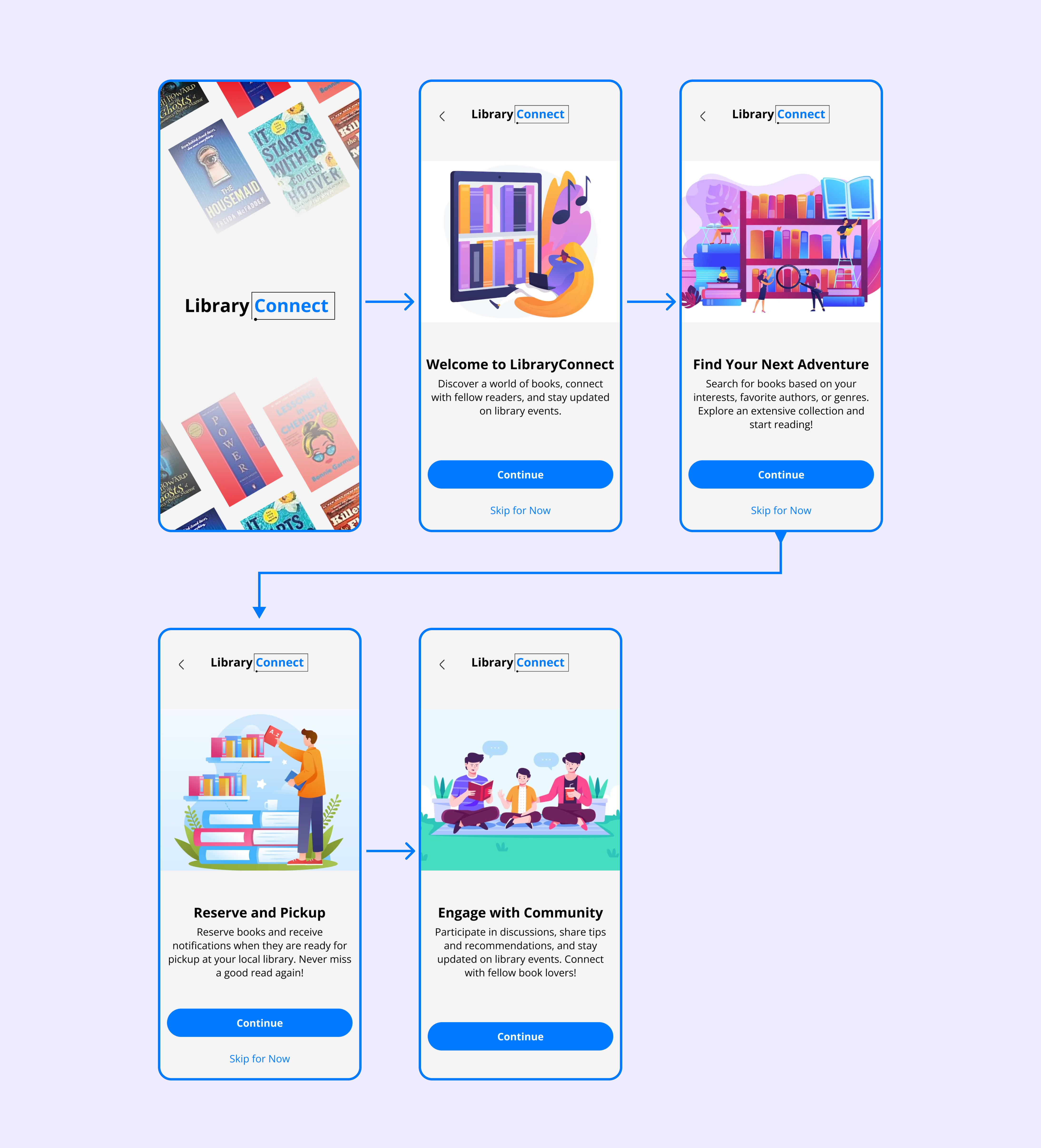
The Register and Log In flow enables new users to create an account on the LibraryConnect app. Users provide their basic information, such as name, email, and password, to create their profile. This allows them to access personalized features, including book reservations, notifications, and community engagement.


The book search and reservation flow simplifies the process of reserving books. Users select their desired books from the search results and initiate the reservation. The app checks availability and notifies users when their reserved books are ready for pickup at their chosen library branch.


The rating and review flow enables users to share their thoughts and opinions on books they’ve read. Users can rate books on a scale, provide written reviews, and even interact with other users’ reviews. This feature fosters a sense of community and helps users discover new books based on peer recommendations.


The community discussion flow enables users to engage in lively book-related discussions with fellow readers. Users can explore discussion topics, join existing conversations, or start their own threads. They can share their thoughts, ask questions, and exchange recommendations with other community members.
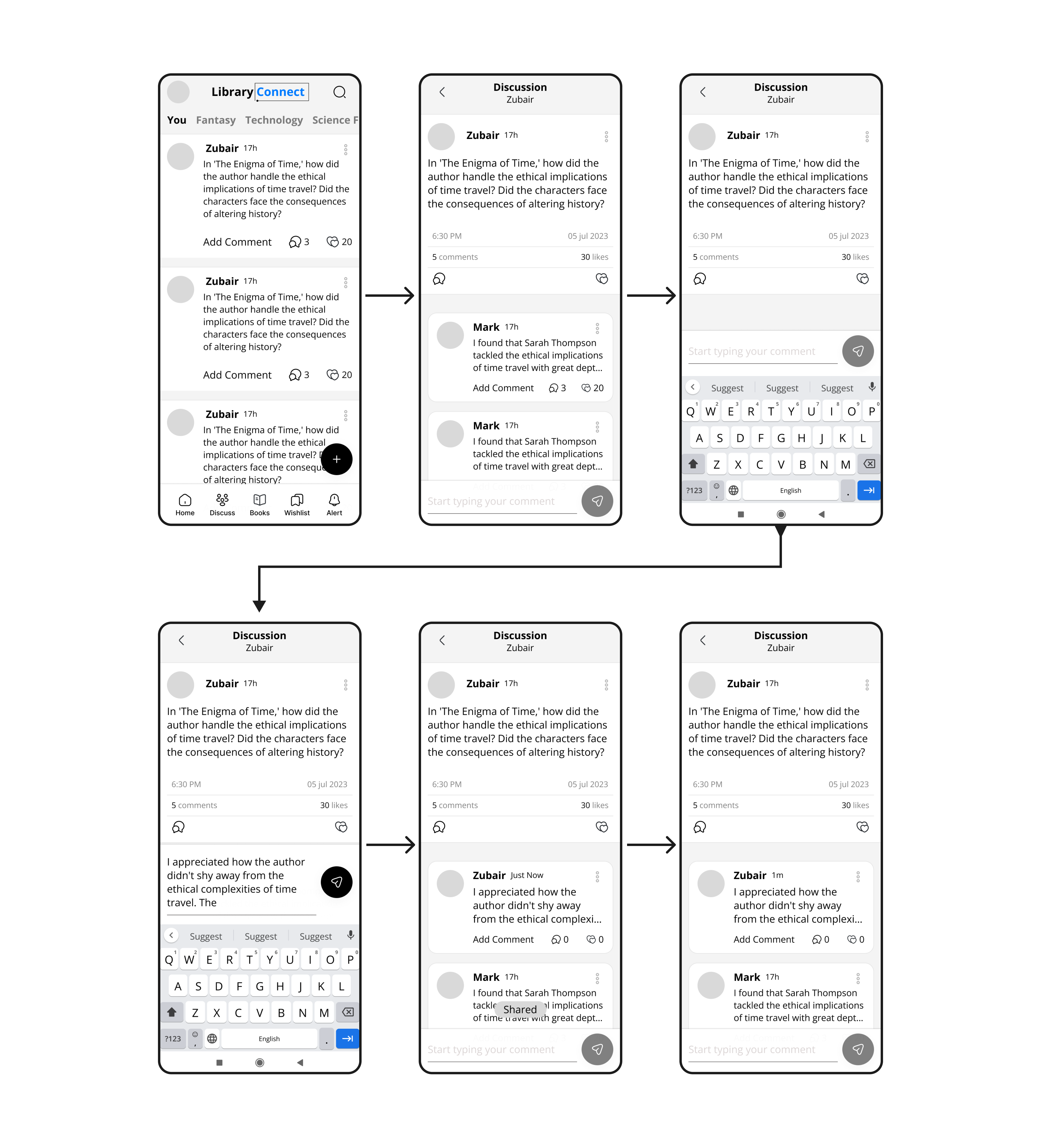
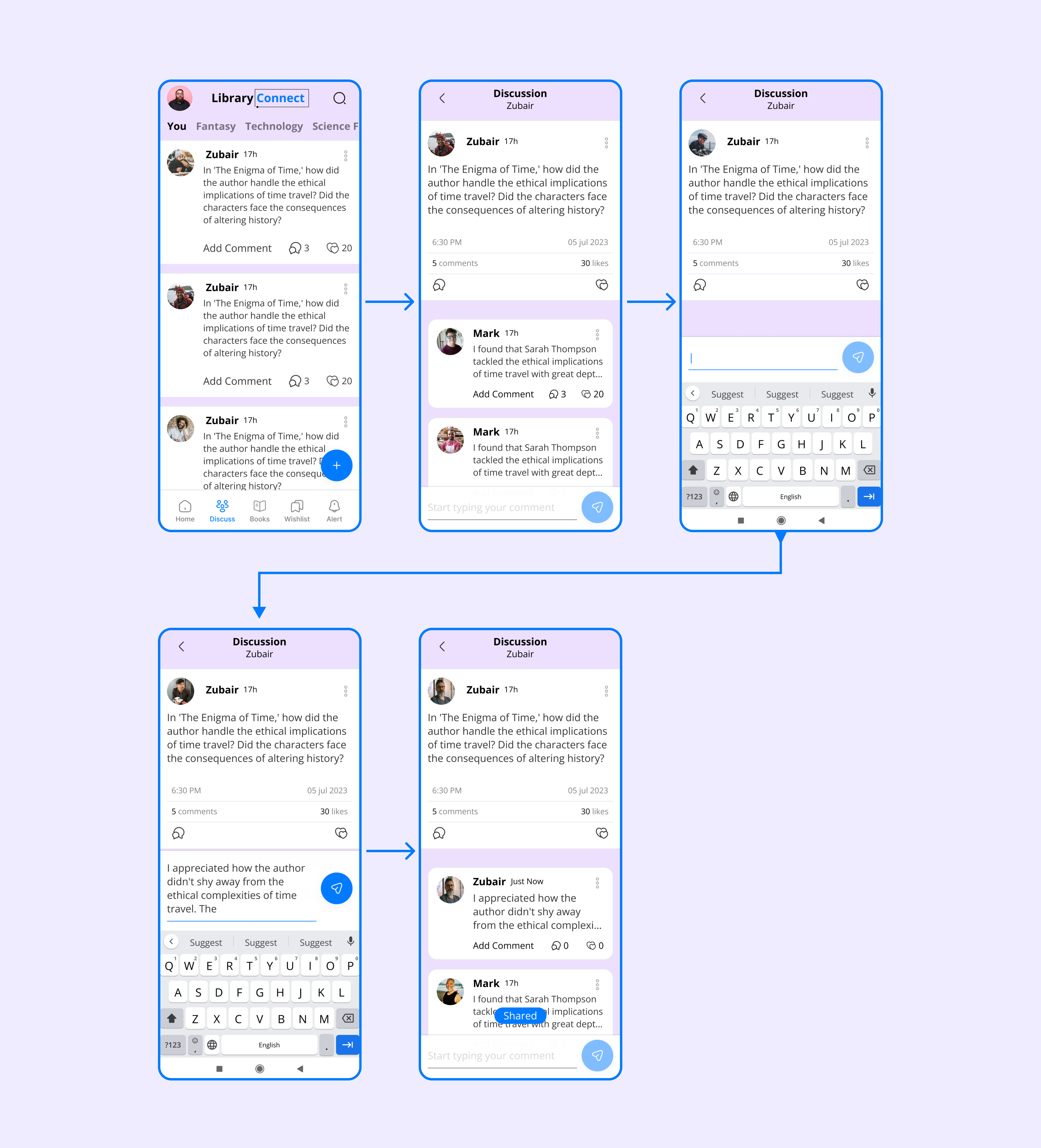
The alert flow keeps users informed about their book reservations and library updates. Users receive notifications when their reserved books are available for pickup or when there are upcoming library events, such as author talks or book clubs. Notifications ensure timely communication and a smooth library experience.
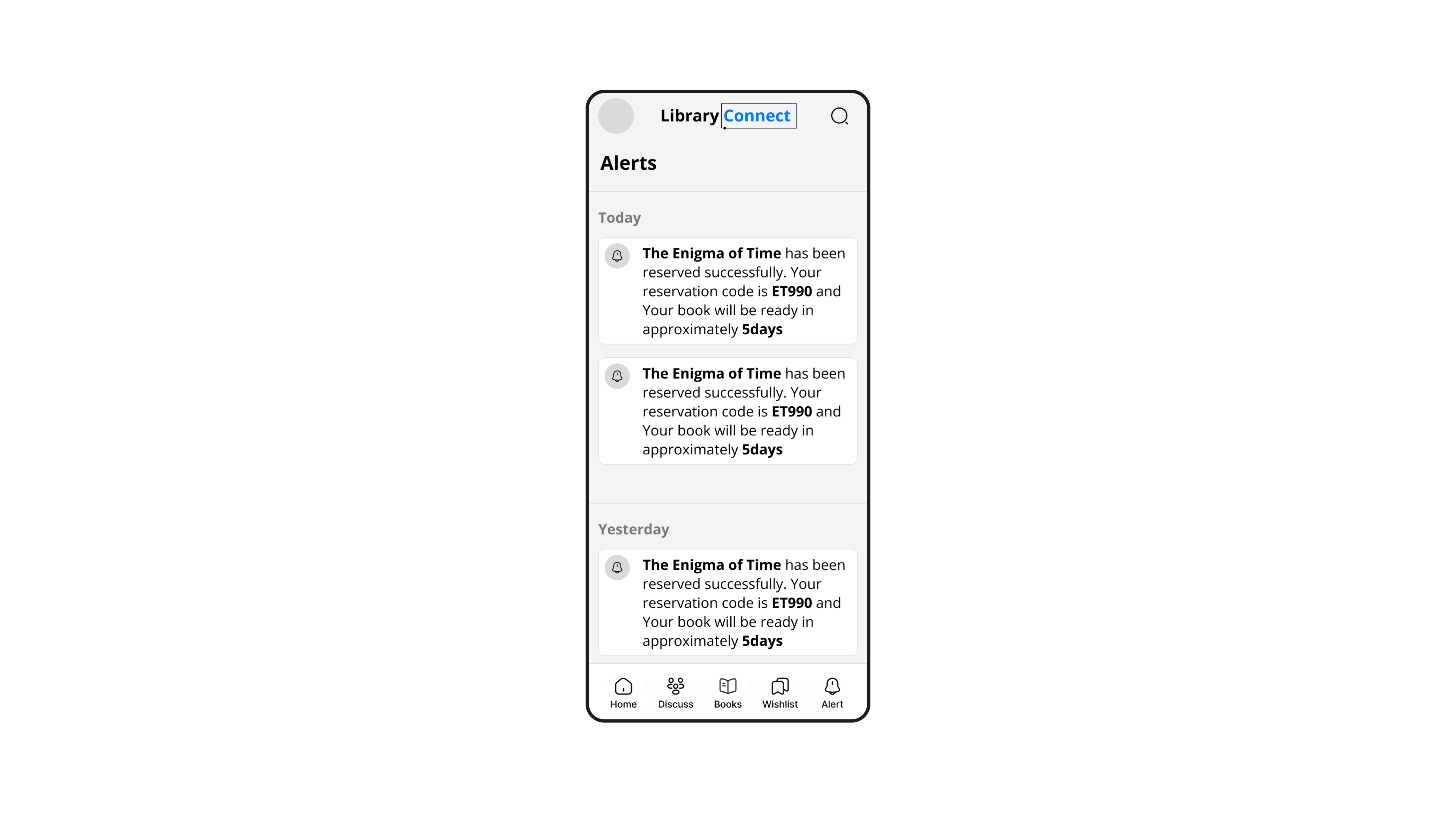

User-Centric Design: We learned the importance of understanding user needs and preferences.
Streamlining Processes: We identified the significance of simplifying and automating manual processes.
Community Engagement: We recognized the value of fostering a sense of community.
User Testing: Conduct user testing sessions to validate assumptions, gather feedback, and identify areas for improvement.
Analytics Integration: Implement analytics tools to track user behavior and usage patterns, gaining insights into user engagement and feature performance.
Collaborate with Libraries: Engage with local libraries to establish partnerships and ensure smooth integration with their systems.